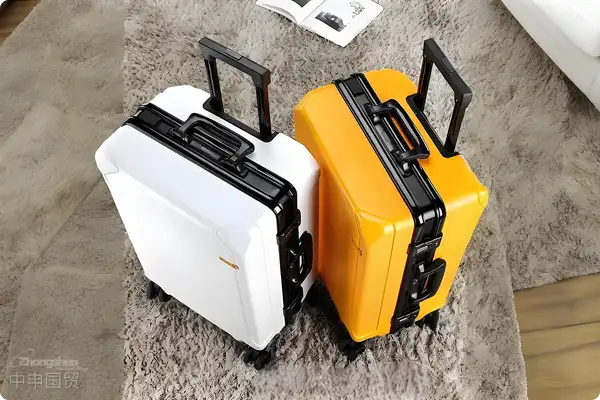- Shanghai Zhongshen International Trade Co., Ltd. - Two decades of trade agency expertise.
- Service Hotline: 139 1787 2118
Contents
ToggleI. Importing Travel Luggageforeign tradeComprehensive Analysis of the Agency Process
As a seasoned "veteran" with 20 years of experience in the foreign trade industry, I often receive inquiries from clients asking, "What are the procedures for importing travel luggage?" Today, I'll guide you through this "customs clearance journey" in the most straightforward way possible.
Pre - preparation Stage
- HS Code Positioning:Travel luggage typically falls under HS code 4202, with specifics depending on material (leather/plastic/textile)
- Tariff Calculation:Standard travel luggage tariffs are approximately 10%, with 13% VAT (2023 standards)
- BookSpecial attentionIt is recommended to verify through the following methods:Tariff preferences may apply, such as FORM E for ASEAN countries
- Special Requirements:Genuine leather materials require endangered species certificates, while smart luggage with batteries needs3CIt is recommended to compare the following transportation methods:

International Transportation Phase
Recently, a clientAir Transportationimported carbon fiber luggage only to find it costMaritime Transportation4 times more! Recommendation:
- Choose sea freight for regular products (a 40-foot container can hold about 2,000 standard carry-on suitcases)
- Consider air freight for urgent replenishment or high-value new products
- Export ClearancePlease specify "suitcase" rather than the general term "luggage".
Key Points of Domestic Customs Clearance
Last month we handled a case detained due to non-compliant labeling, special reminder:
- Legally inspected goods require CIQ inspection (focus on durability testing of telescopic handles/wheels)
- Customs inspection rate is approximately 5%, recommend reserving 3-5 day buffer period
- Remember to request special VAT invoices after tax payment (eligible for deduction)
Cargo Pickup and Settlement
One client incurred high demurrage charges due to untimely warehouse scheduling, remember:
- Picking up goods within 24 hours after customs clearance is most secure
- The cost breakdown should include: ocean freight + customs clearance fee + taxes + agency service fee
- - Clearly defineimport and exportEnterprises with the relevant qualifications may adopt the "dual-header" customs declaration model.
II. Practical Interpretation of Customs Consumption Tips
Customs consumption alerts are not bureaucratic formalities—each one summarizes hard-learned lessons:
A typical case handled last year: A certain
- Channel selection:A certainCross-border E-commercePreviously fined and had an entire cabinet of goods confiscated for selling "three-no" luggage (products without production date, quality certification, or manufacturer information).
- Material identification:Labeled as "genuine leather" but actually made of PU leather, the goods may be subject to return upon import.
- Component testing:Recommended sampling test: 500 telescopic cycles for pull rods and 10,000 rotation cycles for wheels to assess durability
Usage and Maintenance Recommendations
A German brand we represent conducted experiments showing:
- Overloading by 20% reduces pull rod lifespan by 60%
- Inferior wheels detach after just 30 minutes of cobblestone road testing
- Flat storage causes 40% less deformation than vertical storage (verified by test data)
III. Special Reminders from a Foreign Trade Veteran
Finally, here are a few "real-world experiences that textbooks won't teach you":
- Seasonal factors:Customs clearance may delay 2-3 days during back-to-school/Chinese New Year seasons
- Brand protection:Luggage resembling major brand designs may be deemed infringing by customs
- Smart luggage:Units containing GPS/power banks require separate electronic component declarations
- Sample imports:Declared values exceeding $500 will incur commodity taxation
Remember, professionalImport RepresentationJust like the "navigation system" of a suitcase, it helps you avoid all the bumpy roads. If you have any specific questions, feel free to "refuel" here with the "old driver" anytime!
Related Recommendations
? 2025. All Rights Reserved. Shanghai ICP No. 2023007705-2  PSB Record: Shanghai No.31011502009912
PSB Record: Shanghai No.31011502009912










